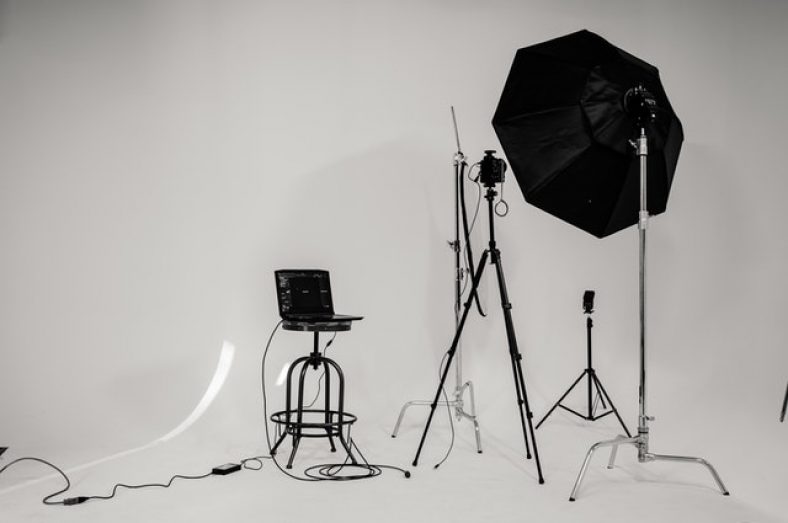The benefits of using strobe lighting on your photoshoot can not be overstated, as it is most typically used in studio circumstances.
The powerful lighting setting is ideal for long-distance shooting since it allows you to set your subjects further away while still allowing them to be attractively lit. This is especially effective for group photographs or shots where the background is as important as the main focus of the composition.
You may also utilize strobe lights to produce effects without losing any quality. Send light via a diffuser to give the light a gentle or feathered effect.
Strobe lights enable you to change the color temperature, which improves the color accuracy of your photographs, which is important for product photographers.
What are the finest photography strobe lights, and how do you employ them?
Photography is a form of art, and therefore, there are always ways to enhance and expand your skills. Learning about various pieces of equipment needed to make a varied range of images is a great way to develop in photography.
We’ll explore strobe lights and also how they compare to Speed lights in this article. To learn more, keep reading.
In photography, what are strobe lights?
Strobe lighting is employed to produce a brief flash of light. The light produced is a lot brighter and stronger. Moreover, the burst seems to be much shorter than that produced by a typical flash. Depending on whether you need it high for long-distance shots or low for close-ups, you can change the output.
Strobe lights are, however, extremely dependable and have a short recycling time. They also have a complete power output ranging from 100 to 1000 watts. Although many versions include a customizable output to lower the light for close-ups, the power defines the range you can deploy the item.
Changing Lighting with Light Modifiers
You can use light modifiers to alter the quality of light output from strobe lights and other types of studio lighting. A reflector, for instance, can direct light onto the model’s face or offer side lighting. Reflectors come in a variety of shapes and sizes, including concave, flat, and umbrella-shaped types.
Softboxes diffuse the light to generate softer photos, while colored filters plus gels can change the light’s color temperature.
To arrange studio lights for the best impact, both indoors and outdoors, a wide range of light stands, as well as mounting platforms and positioning accessories, are available. Furthermore, accessories and remote triggers reduce the need for cords between the camera lens and the strobes.
Strobe Lights Accessories
TTL studio strobe lights are similar to TTL speed lights installed on the camera in that they operate in the same way. You can typically get superior results by carefully measuring exposure with light meters and extras. Position the light meter facing the camera while being close to the subject using a strobe. It, therefore, gauges the camera’s perception of the light—this is known as incidence metering.
Speed lights vs. strobe lights
So, should you adopt the use of strobe lights instead of the more typical Speedlight? A photography flash that connects to your camera’s hot shoe is called a Speedlight. Speed lights also produce a short burst of light that allows you to adjust the intensity of light for the photographer. A Speedlight is frequently used in conjunction with photographic umbrellas and softboxes to achieve the ideal degree of light.
On the other hand, speed lights are much more portable than strobe lights and could also be used in more remote areas with ease. They are a less expensive alternative to shooting, whether in a studio or even on location. Furthermore, Speedlight is generally less expensive than strobe lights, thus making them more accessible to amateur photographers looking to enhance their skills and work professionally.
However, on the other hand, speed lights do not offer as much flexibility as strobe lighting-you can’t alter the color temperature of a product to make it more appealing. In some cases, this can make the total impact less desirable.
Strobe lights are an amazingly powerful choice that can outshine the sun itself to produce incredible photographic situations if portability and expense are not a concern.
Strobe light pros
More power
The majority of flash units are more powerful than the majority of continuous light choices currently available. In reality, having more power isn’t always a great idea, and there are many shooting scenarios where the power given by natural sunlight is more than enough. However, there are situations in photography that require high-level power.
This is typical of outdoor photographs taken in bright sunlight, which is not ideal for many photographers. However, using strobe lighting, you can focus the flash once on a person, photograph them, then get a well-exposed image with the sky intact as well as the subject well lit. That’s incredible!
Lowering ISOs results in sharper photos
Keeping your ISO at approximately 100 will give you the best results.
Boost the ISO to automatically increase the exposure, thus making the photo brighter when photographed without any extra light sources.
You can keep the ISO low when utilizing a powerful flash by letting the light illuminate the subject rather than the camera.
A strobe, as contrasted to continuous light, tends to produce a bigger volume of focused light. This implies that a photograph taken with a flash will almost certainly not require a higher ISO than a photo captured with continuous light in the very same situation.
Freeze moments
The ability of strobes to freeze movement is extraordinary. Why would you use a flash to freeze movement? In live entertainment like ballet and athletic events, using flash photography in this fashion is pretty common. A properly-placed off-camera flash may add drama to a scene as well.
With this knowledge, go out and take some incredible pictures using strobe lights for an added impact.
